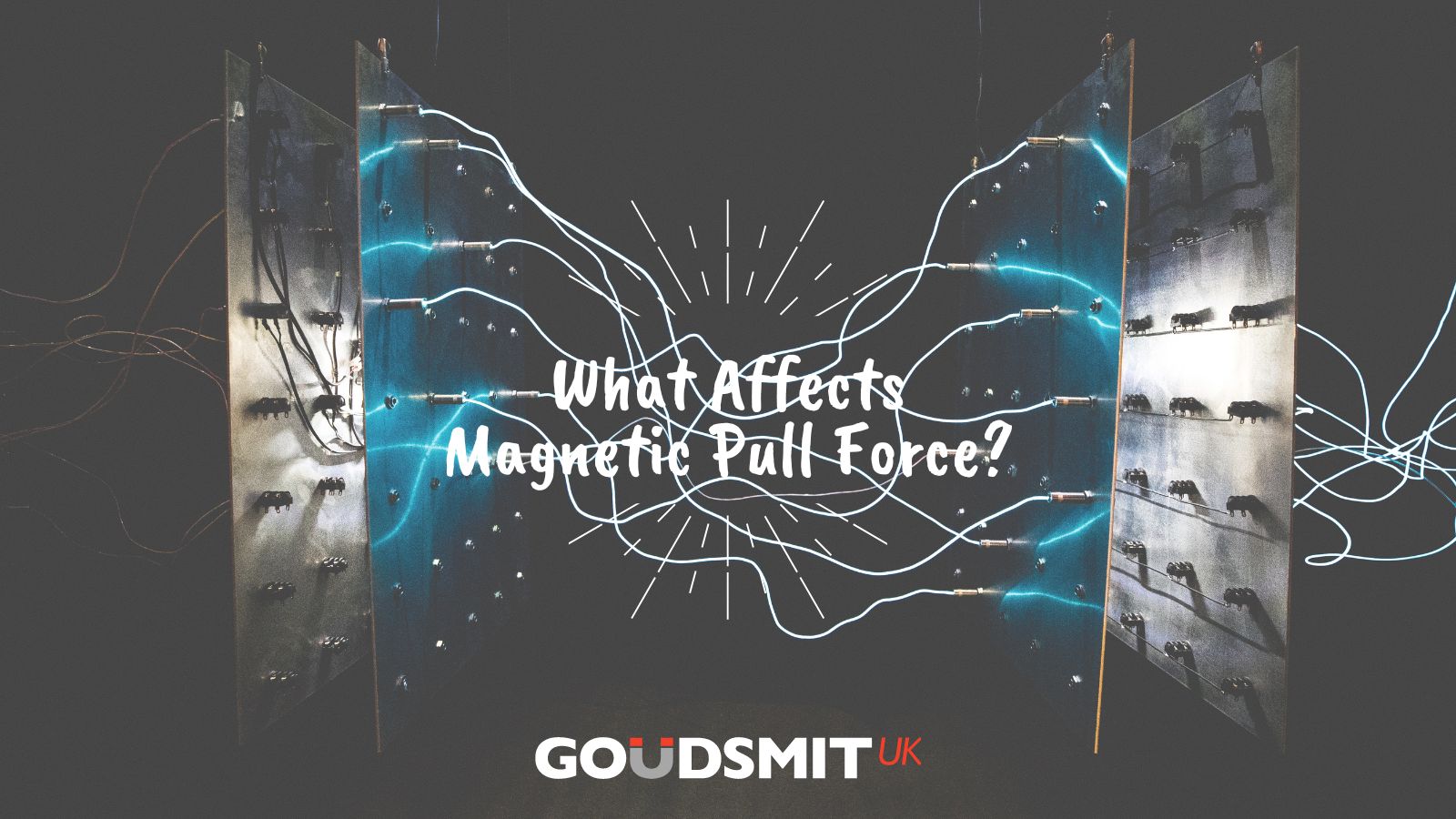Magnetic pull force
When sizing and selecting magnets and custom magnetic assemblies, there are a few vital questions that must be asked. These questions take into consideration the working area in which the magnet will operate, with the answers helping deliver a higher level of success in providing a magnet that meets the fit, form, and function of the application. The three main areas of concern are:
- Air gap relative to holding force
- Workpiece conditions
- Operating temperature
However, each of these aspects represent important conditions for the magnet’s ultimate performance.
Air gap
Air gap, often defined as “the low permeability gap in the flux path of a magnetic circuit”, is considered one of the more critical aspects of magnetic circuit design. The air gap has the potential to greatly affect the performance of a magnet within an application. Put more simply, it’s the “external” distance from one pole of the magnet to the other though a non-magnetic material. Furthermore, low permeability gaps can include:
- Air
- Paint
- Aluminium
- Wood
The importance of an air gap, as a factor in magnet performance, is demonstrated by how quickly the holding force declines in the magnet. Moreover, the larger the gap, the greater the reduction in holding force of a magnet.
Workpiece conditions
The workpiece situations include:
- Material type
- Material thickness
- Surface condition
Additionally, workpieces made from mild steel will have a higher magnetic permeability, which allows the magnet to function at a more optimal level. Magnetically saturated workpieces, such as lower permeability stainless steels or thin mild steel, are usually undesirable and will result in lower than expected holding forces. Various surface conditions, such as paint, mill scale, rust, and less than flat surfaces, all create air gaps that detract from holding force. Whenever possible, a clean, flat surface will offer the most ideal working surface.
Operating temperature
Temperature affects magnetism by either strengthening or weakening a magnet’s attractive force. A magnet subjected to heat experiences a reduction in its magnetic field as the particles within the magnet are moving at an increasingly faster and more sporadic rate. This jumbling confuses and misaligns the magnetic domains, causing the magnetism to decrease. Conversely, when the same magnet is exposed to low temperatures, its magnetic property is enhanced and the strength increases.
Some of the most popular rare earth magnets used today are alloys of Neodymium-Iron Boron (NdFeB). Due to several factors, the neodymium magnets are vulnerable to degradation in magnetic performance. Magnets operating in high temperatures cause a reduction in holding force in all magnetic alloys.
Goudsmit UK
The seemingly simple process of finding a magnet to meet a certain pull force can quickly become more complicated than expected at the surface. Our experts at Goudsmit UK aim to make that process less complex for our customers by using our experience and exposure to a vast number of applications.
At Goudsmit UK we sub-contract manufacture a vast variety of magnets and magnetic assemblies to suit your requirements. Contact us today for more information at info@goudsmit.co.uk or on +44 (0) 2890 271 001.
For more information visit our knowledge base area or download our products and services brochure.







